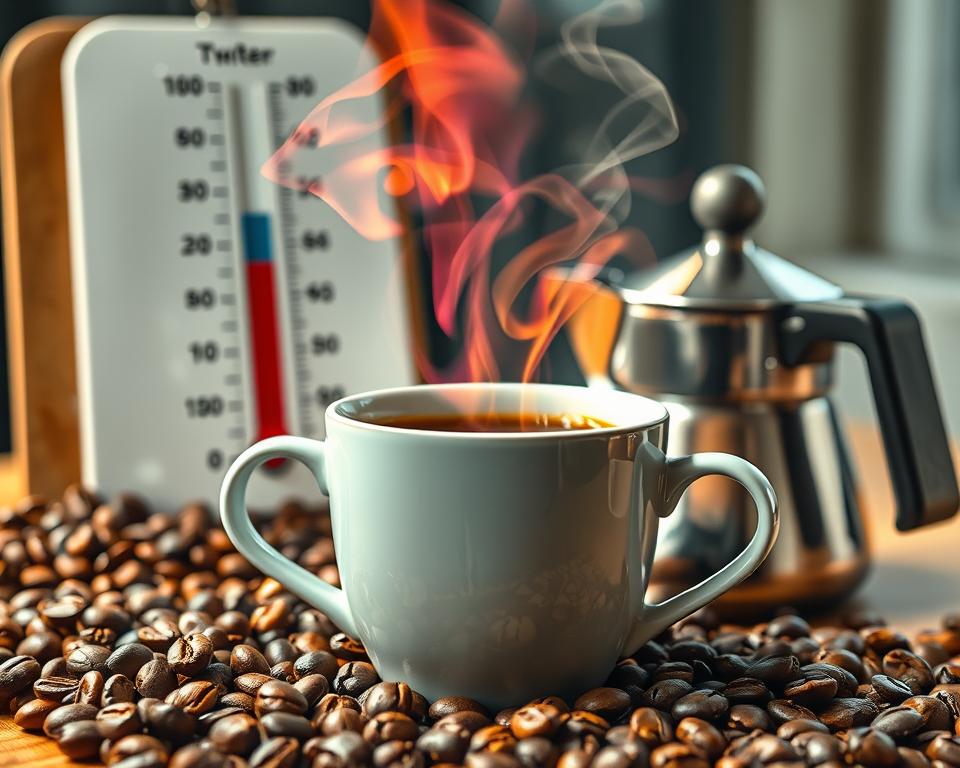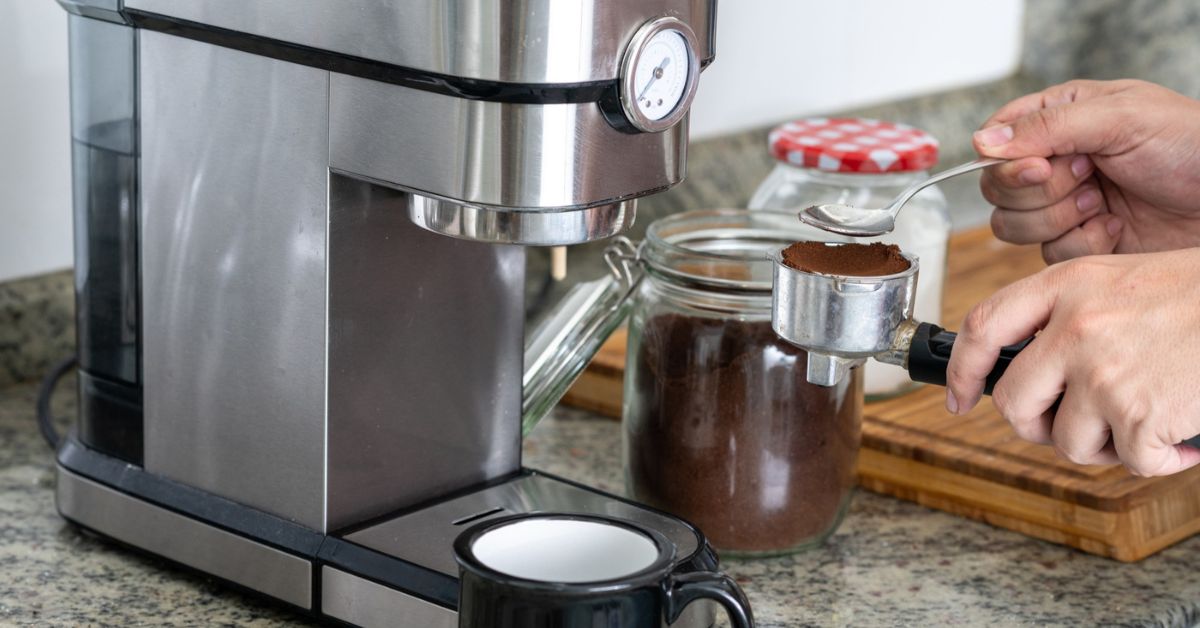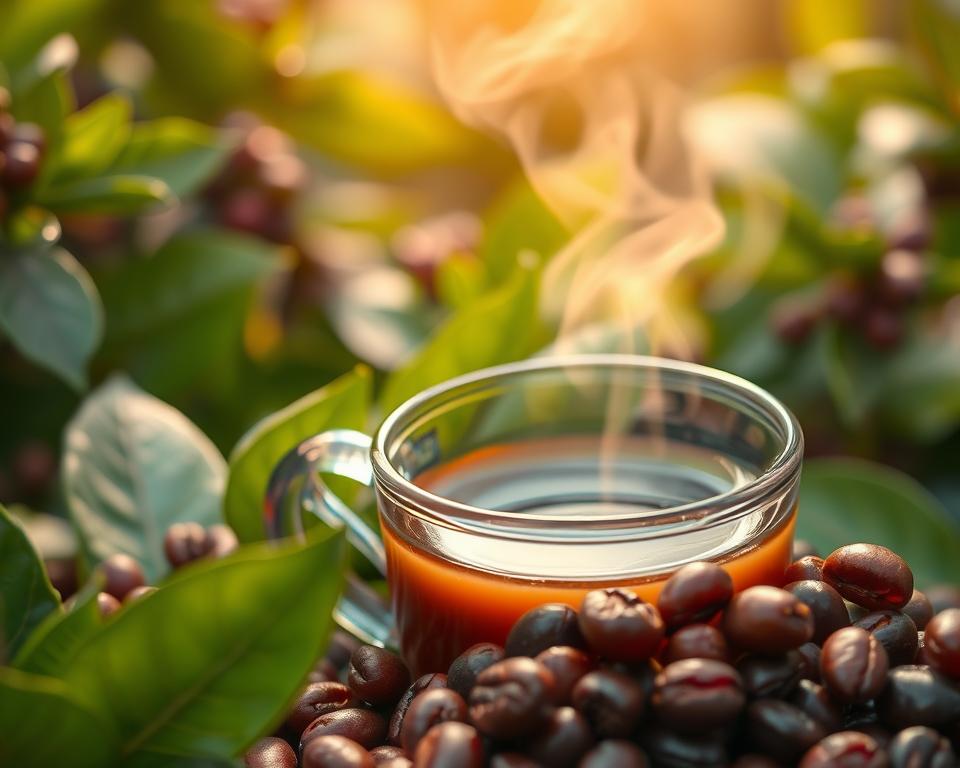Finding the perfect coffee brew involves many factors, one being water temperature. It’s vital for extracting the coffee’s best flavors without getting any bitter taste. The National Coffee Association recommends brewing coffee at temperatures between 195°F and 205°F.
Knowing how water temperature changes your coffee is key for lovers of the drink. If the water is too hot (over 205°F), your coffee may taste too strong and bitter. But if it’s too cool (below 195°F), the coffee might be weak and sour.
If you use methods like pour-over, drip, or French press, you might need to tweak the temperature. Often, it helps to use a slightly hotter temperature to account for heat loss when pouring water on the grounds.
The coffee’s warmth can also be affected by the cup you use and whether you add milk or cream. Coffee stays hotter in insulated containers compared to ceramic. Adding milk or cream cools it down, so brewing a bit hotter might help. Tools like Breville’s coffee machines with their Thermacoil systems keep water at the right temperature for the best brew.
The Importance of Water Temperature in Coffee Brewing
Understanding the importance of coffee water temperature can change the game for coffee lovers. It shows why the right water temperature is key in coffee brewing science. Let’s dive into how it changes the extraction and taste of our favorite coffee.
How Water Temperature Affects Coffee Extraction
Water acts as a solvent in the brewing process, pulling flavors, oils, and chemical compounds from the coffee. The water’s temperature greatly impacts how these elements are extracted. Hot water, between 195°F to 205°F, is best for coffee flavor extraction.
In this range, water dissolves the right amount of solubles for a balanced, tasty cup. But, water that’s too hot can over-extract, leading to a bitter coffee. On the other hand, too cool water can make the coffee weak or sour.

The Science Behind Optimal Water Temperature
The coffee brewing science includes knowing the chemistry behind the best water temperatures. With temperatures between 195°F and 205°F, water efficiently extracts important compounds like oils, caffeine, and acids. These contribute to the coffee’s flavor. For example, espresso does well with slightly cooler temperatures, around 190°F to 195°F, to avoid over-extraction from high pressure.
Meanwhile, cold brew coffee uses a much cooler range, 35°F to 70°F, during its long steeping process. This results in a smooth, less acidic taste.
Common Mistakes and How to Avoid Them
One big mistake in coffee brewing is using water that’s too hot. It can over-extract and make the coffee bitter. To avoid this, monitoring the water temperature closely is key. Another mistake is using water that’s too cold, which leads to under-extraction and a weak brew.
Practice and precision in controlling water temperature are crucial for optimal coffee brewing. Using tools like thermometers or quality brewing equipment helps. This ensures the right temperature range and the perfect cup every time.
Finding the Ideal Water Temperature for Brewing Coffee
Making the best coffee involves many steps. One key part is the water temperature. The perfect range for brewing coffee is between 195°F and 205°F. The National Coffee Association and coffee experts agree on this. It helps extract flavors well, for a great cup of coffee.
Optimal Temperature Range: 195°F to 205°F
The ideal temperature for making coffee is from 195°F to 205°F. Experts and the National Coffee Association confirm this. Light roasts do well at about 205°F because of their complex flavors. Darker roasts are different. They’re best at around 195°F to keep bitterness away. The right temperature also depends on how you brew. For example, pour-overs like the Hario V60 work best a bit hotter. But for pressurized methods, like the AeroPress, cooler is better.
Impact of Too Hot or Too Cold Water
The temperature of water is crucial in coffee brewing. Too cold, and your coffee might taste sour or weak. This happens because cold water pulls out acidic flavors but misses the richer ones. On the other hand, too hot water can ruin your coffee. It makes the coffee bitter and harsh by pulling out unwanted flavors. Since 30% of a coffee bean can dissolve, getting the temperature right is a big deal.
Adjusting Temperature Based on Personal Preference

Finding the right temperature for your coffee is fun. Things like adding cream or the type of coffee bean can change what temperature is best. For some, hotter water is better because it gets more flavor from the bean. Using something like a gooseneck kettle helps control the water temperature and how it mixes with the coffee. Trying different temperatures might help you find what you like best. To learn more about making coffee that suits your taste, read this article on coffee’s role in intermittent fasting.
How Coffee Beans and Roast Levels Influence Brewing Temperature
The right brewing temperature can make your coffee taste amazing or pretty bad. Knowing how different beans and roast degrees impact this temperature helps you get a great taste. This ensures you enjoy every sip.
The Role of Light Roasts in Temperature Selection
Light roast coffee beans are best at high temperatures. Around 205°F (96°C) is ideal for bringing out their complex flavors. Pour-over methods like Chemex or Hario V60 work best at this temperature.
Why Dark Roasts Require Different Temperature Handling
Dark roast beans need cooler water to avoid bitterness. A temperature about 195°F (90°C) enhances their bold tastes without being too sharp. An AeroPress or espresso machine is good for these beans. They make the coffee rich and full.
Special Considerations for Different Bean Types
You should adjust your water temperature based on the bean type for the perfect cup. For example, arabica beans do well at higher temperatures. In contrast, robusta beans, which are strong and have more caffeine, also handle high temperatures well. Matching the right temperature with the bean type brings out its best qualities.
Check out this article on caffeine content for more brewing tips. It adds to your coffee making knowledge.
Practical Tips for Maintaining the Right Water Temperature
To make your coffee taste perfect, you need the right water temperature. Let’s look at some tips to keep your coffee brewing consistent and accurate.
Using a Thermometer for Precision
Using a thermometer can really improve your coffee making. It ensures your water is between 195°F to 205°F for pour-over and drip methods. For espresso machines, aim for around 199°F. This prevents mistakes like over or under extracting your coffee.
Preheating Your Brewing Equipment
Preheating your coffee gear is key to keeping the right temperature. It helps avoid losing heat when brewing, keeping your coffee’s flavor strong. Use water close to 205°F for Chemex or V60 methods, and about 194°F for a French press for better taste.
Investing in Quality Equipment for Consistent Results
For the best coffee, get high-quality brewing tools. An electric gooseneck kettle with temperature control is a great choice. Brands like Breville have kettles that keep the water at the perfect temperature. This makes your coffee taste better and lets you try out new brewing methods.
Check out this guide for more tips on brewing coffee.
Does Low-Tech Coffee Brewing Require Specific Water Temperatures for Optimal Flavor?
Low-tech coffee brewing techniques can significantly enhance your cup, but water temperature plays a crucial role in extracting optimal flavor. Simple methods for coffee brewing, like using a French press or pour-over, require water heated between 195°F and 205°F. This range ensures a balanced extraction, highlighting the coffee’s subtle notes.
Conclusion
For the best coffee, getting the water temperature right is essential. Whether you prefer light or dark roast, the temperature plays a big role. Keep it between 195°F and 205°F for the best flavor.
Going above 205°F might make your coffee bitter. If the water is too cool, under 195°F, your coffee could taste weak or sour. So, the right temperature is key for a great cup.
Espresso lovers aim for 190°F to 195°F because of how espresso is made. Cold brew fans, on the other hand, go for much cooler temperatures. This difference is due to how the coffee beans interact with the water.
Making the perfect coffee is about trying new things as much as it is about following rules. Guidelines from coffee experts are helpful. But, tweaking temperatures to suit your taste can make your coffee even better.
For coffee lovers, adjusting the temperature can improve your coffee. It makes brewing a more enjoyable experience. Discovering your ideal cup of coffee is a rewarding process, similar to exploring this detailed brewing guide.
FAQ
What is the optimal coffee brewing temperature?
The best temperature for brewing coffee is between 195°F and 205°F. This ensures that the coffee’s flavors are extracted just right. It helps avoid a bitter or weak taste.
How does water temperature affect coffee extraction?
Water temperature is key in coffee extraction. It pulls flavors, oils, and compounds from the grounds. The right temperature makes sure the extraction is balanced, avoiding bitterness or a sour taste.
What are common mistakes in brewing coffee regarding water temperature?
One big mistake is using water that’s too hot, leading to a bitter coffee. Another is using water that’s too cold, making the coffee weak and sour. It’s important to find the right temperature.
How can I adjust the brewing temperature based on my personal preference?
Your taste matters a lot when adjusting the brewing temperature. Feel free to experiment within the 195°F to 205°F range. Play around with the coffee type, roast, and flavor until it’s just right for you.
Why do light roasts require a different brewing temperature compared to dark roasts?
Light roasts need higher temperatures to extract their complex flavors. Dark roasts, with their strong flavors, can turn bitter if the water’s too hot. So, it’s better to use slightly cooler water for them.
What specific considerations should I keep in mind for different coffee bean types?
Arabica beans need higher temperatures because of their subtle flavors. Robusta beans are stronger and can handle higher temperatures without getting over-extracted. Think about the bean type when choosing your temperature.
How can I ensure precise water temperature for brewing coffee?
A thermometer can help you keep water within the ideal range. Also, investing in quality gear like a gooseneck kettle with temperature control or a Breville coffee machine can make a big difference.
Why is preheating brewing equipment important?
Preheating keeps the temperature stable during brewing. This avoids heat loss and keeps water in the perfect range for extracting flavor.
What equipment is recommended for consistent coffee brewing results?
For consistency, get good brewing tools. A gooseneck kettle for temperature control, a Breville with Thermacoil, and an accurate thermometer are great for keeping water at the ideal temperature. This will give you a great cup every time.




